Geology of the Adirondack Mountains (cont.)
4 Adirondack Highlands
The Adirondack Highlands contain several generations of rocks that underwent metamorphism during the different orogenies, culminating with granulite facies metamorphism during the Ottawan episode:
-The oldest (ca. 1.4-1.3 Ga) are pre-Elzevirian igneous rocks of a magmatic arc which developed on the southeastern Andean-type margin of Laurentia. They were separated from Laurentia by the Trans-Adirondack basin (TAB) when Adirondis (see p. 1) rifted away. They are were mostly calc-alkaline tonalites and granodiorites, as found in the southern and eastern Highlands.
-Sediments which accumulated in the TAB and were later metamorphosed during the Shawinigan and Ottawan orogenies, giving way to marbles and calcsilicates.
-Gabbro, granodiorite and granite intruded during the Elzevirian orogeny (1245-1220 Ma).
-The plutonic rocks of the AMCG suite (anorthosite-mangerite-charnockite-granite) which formed at the end of the Shawinigan orogeny.
-The post-Shawinigan, pre-Ottawan Hawkeye granite (~1096 Ma), maybe related to the simultaneous magmatism in the Mid-Continent Rift.
-Lyon Mountain granite, which is the only Ottawan igneous unit in the Highlands. It's a leucogranite, as often found in late-orogenic environments (e.g., in the Himalaya).
The origin of the AMCG suite long remained mysterious and often considered as anorogenic (i.e., formed in a stable crust). However U-Pb dating proved that the suite developed during the terminal phase of the Shawinigan orogeny, and that anorthosite and the MCG components of the suite are coeval. The most commonly accepted explanation is the one given by McLelland et al. (2010), which implies lithospheric delamination. This concept was first considered by Bird (1978, 1979) first in the Himalaya, then in the Colorado Plateau. An overthickened lithosphere (60 km for the Highlands at that time) founders, leading to the delamination of the lithospheric mantle. Hot asthenosphere fills in the void and decompression induces partial melting, so a gabbroic magma can form. Fractionation produces heavier olivine and pyroxene which sink, while lighter plagioclase floats on top of them. Delamination and the end of Shawinigan contraction create an extensional environment where MCG and anorthosite can ascend.
4.1 Older Rocks
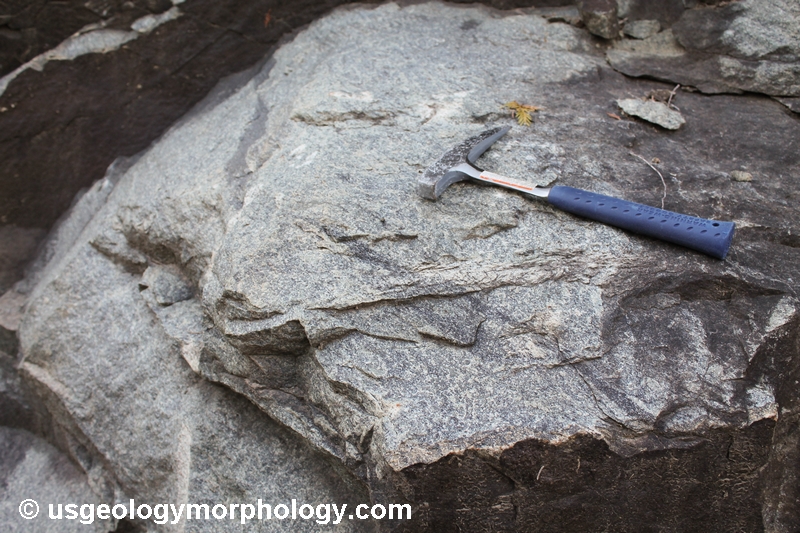
Figure 4-1. Royal Mountain tonalite.
The oldest rock in the Adirondacks, dated at 1307 Ma (McLelland, 2003), that was part of a pre-Elzevirian magmatic arc on the southeastern margin of Laurentia (see the history of the Adirondacks in part 1). More broadly such tonalites in southern and eastern Adirondacks have been dated at 1350-1300 Ma (ibidem). Hammer for scale.
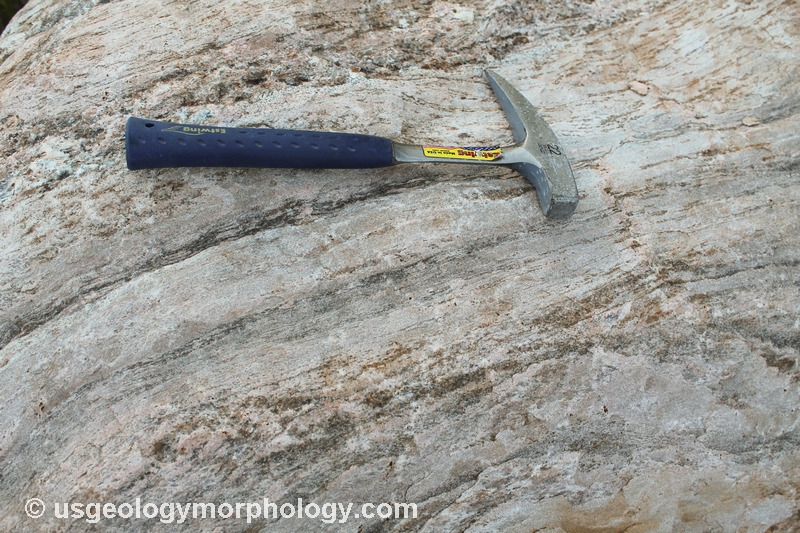
Figure 4-2. Irving Pond quartzite.
Very pure quartz sandstone metamorphosed into quartzite. It contains thin dark gray layers of pelitic material. It's been dated at ~1.3 Ga, meaning it derives from pre-Elzevirian sediments, which could have been metamorphosed during the Elzevirian orogeny. Hammer for scale.
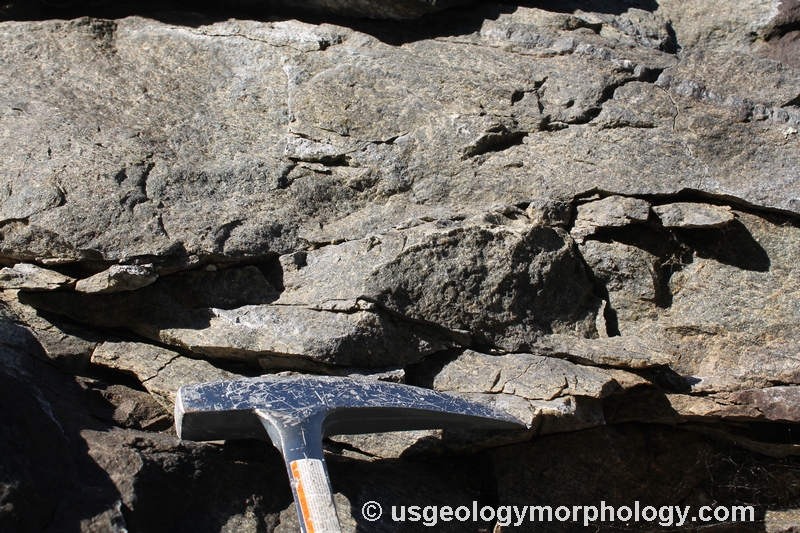
Figure 4-3. Charnockite on Rt. 10 north of Canada Lake.
This Elzevirian charnockite (1233 Ma, McLelland and Chiarenzelli [1990]) of granodiorite composition with some pyroxene has been metamorphosed into gneiss and deformed. Hammer for scale.
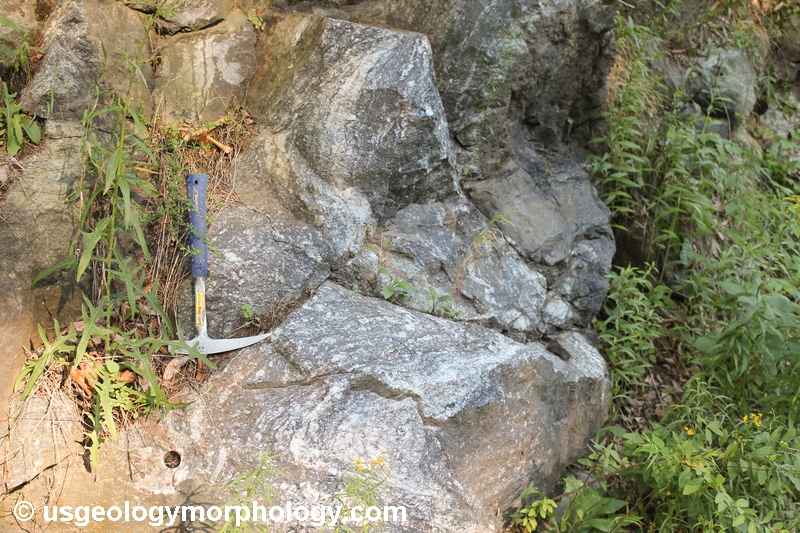
Figure 4-4. Peck Lake metapelite.
Dark melanosomes of garnet, biotite, quartz and oligoclase. Light leucosomes of quartz, microcline and oligoclase. Leucosomes result from Elzevirian-age anatexis. Both the melanosomes and the leucosomes probably derive from a graywacke-slate protolith (McLelland and Husain, 1986, McLelland, 2003). Hammer for scale.
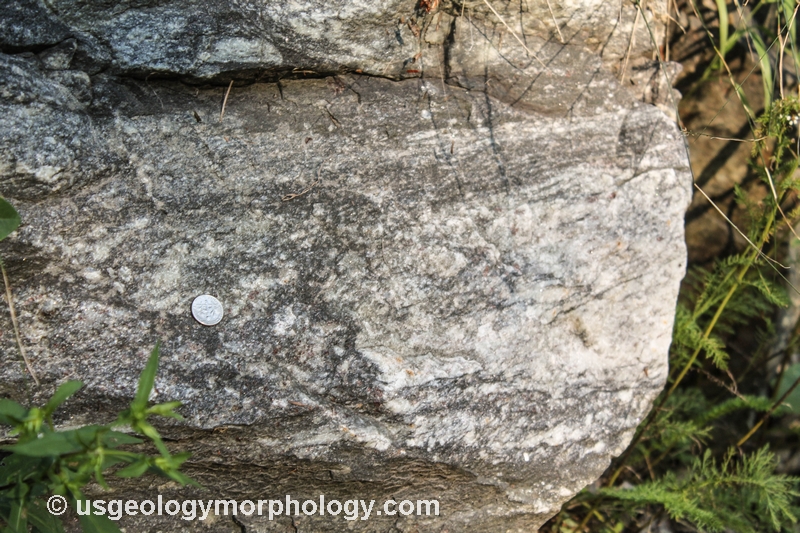
Figure 4-5. Peck Lake metapelite close-up.
In some places, the leucosomes appear as veins crosscutting the melanosomes. At this scale, red garnet crystals are visible in the melanosomes. Quarter for scale.
Short Glossary (opens in new tab)
